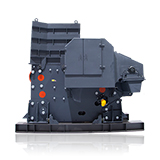What Can Affect the Quality of the Final Aggregate?
The quality of final aggregate is critical in construction, road building, and concrete production, as it directly impacts structural integrity and durability. Several factors—ranging from raw material properties to processing techniques—can influence the final product’s shape, gradation, strength, and cleanliness. Understanding these variables ensures optimal crushing performance and high-quality output.

Factors Affecting the Quality of Final Aggregate
1. Raw Material Characteristics
The geological origin of the parent rock plays a fundamental role in aggregate quality. Igneous and metamorphic rocks, such as granite and basalt, typically produce strong, durable aggregates, whereas sedimentary rocks like limestone may vary in hardness and abrasion resistance. Additionally, natural flaws such as fractures, weathering, or clay content can weaken the final product.
2. Crushing Equipment and Technology
The choice of crusher significantly affects particle shape and size distribution. Jaw crushers produce coarser aggregates with some elongation, while cone and impact crushers yield more cubical particles. Advanced crushing technologies, such as SBM’s C6X Jaw Crusher with optimized kinematics or the C5X Impact Crusher with high-speed rotor design, enhance shaping and reduce flakiness. Improper machine settings (e.g., incorrect speed, closed-side setting) may lead to poor gradation or excessive fines.
3. Crushing and Screening Process
Efficient screening ensures proper size segregation. Overloading screens or using worn-out mesh can result in undersized or oversized particles contaminating the final product. Multi-stage crushing (primary, secondary, tertiary) refines aggregates, but inadequate flow control between stages may cause recirculation loads, increasing fines and energy consumption.
4. Moisture and Contaminants
Excessive moisture in feed material can lead to clogging in crushers and screens, reducing efficiency. Clay, dirt, or organic matter mixed with aggregates weaken concrete bonding and may require washing systems. Modern aggregate plants integrate log washers or air classifiers to remove impurities.
5. Operational Practices and Maintenance
Poor maintenance of crusher liners, screen decks, or conveyor belts accelerates wear, leading to inconsistent output. Regular inspection and timely replacement of wear parts ensure stable production quality. Additionally, improper feed control (e.g., uneven distribution, oversized boulders) causes crusher overload and irregular fragmentation.
Producing high-quality aggregate requires a holistic approach—selecting suitable raw materials, employing advanced crushing technologies, optimizing process flow, and maintaining equipment. By addressing these factors, operators can achieve well-graded, durable aggregates that meet industry standards for strength and performance.







